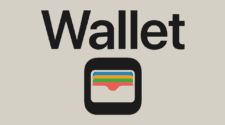In the digital world, ads have long been the lifeblood of many websites. Webmasters and content creators rely on the steady flow of visitors to generate revenue through clicks and impressions. For years, this model worked well. The more traffic a website receives, the more revenue it could generate from ads. Google, as one of the key players in this ecosystem, benefited greatly from this system, taking a cut from the ad revenue. However, as we enter the AI age, the landscape is changing rapidly. AI tools and platforms can now provide users with instant answers, often without the need to visit multiple websites. This shift means fewer people are clicking on links. Google is now working on a new monetization model for bloggers and content creators.

The Problem: Reduced Traffic, Reduced Income
The rise of AI-driven search tools has led to a new hurdle for bloggers and content creators. With the accurate results from AI tools, there is a big problem for websites that depend on traffic to generate income. If users no longer need to visit a site to get the news they need, the site’s traffic drops. With less traffic comes a reduction in ad revenue, which can have a devastating impact on websites that rely on ads as their primary source of income. Smaller websites, in particular, may struggle to cover their operating costs, let alone make a profit. The era of relying solely on ads for income is fading, and content creators are feeling the pinch. It now appears that relying solely on ads for income is no longer sustainable. For this reason, Google is bringing a new solution
The Solution: Google’s New Monetization Model
Recognizing the need for change, Google has begun exploring new ways to help webmasters and content creators maintain their income in the AI era. Earlier this year, IT Home reported that Google is working on a new network monetization model. This model aims to provide an option to the traditional ad model. It will allow users to make small payments directly to websites.
This approach represents a major shift in how websites can generate revenue. Instead of relying solely on ads, webmasters can now open up new revenue channels through direct user payments. This could include micropayments for accessing premium content, making small donations, or even paying for ad-free experiences. By diversifying their revenue streams, websites can become less dependent on ads and more resilient in the face of changing user behaviours.
How It Works: The Role of Micropayments
At the heart of this new monetization model is the concept of micropayments. These are small, often negligible amounts that users can pay to access content or support a website. While a single micropayment may not amount to much, when aggregated across thousands of users, it can provide a steady stream of income for webmasters.

Software engineer Alexander Surkov has been instrumental in developing this concept further. He proposed the introduction of relevant code into the Chromium source code to build a secure and portable system for online micropayments. This system would allow users to make payments without much hassle, creating a seamless experience for both the user and the website owner.
Simple Integration: Adding New Code
One of the most appealing aspects of this new monetization model is its simplicity. Webmasters don’t need to undergo complex processes to implement it on their sites. All that is required is the addition of a “rel=monetization” attribute to the “link” element in the website’s HTML code. This small change enables the website to start accepting micropayments from users.
For users, the process is equally easy. They need to set up digital wallets, such as Gatehub or Fynbos, which can be linked to specific websites. Once the wallet is set up, users can make payments automatically when they visit a site. This system is designed to be user-friendly, allowing for password-free payments and minimizing the friction often associated with online transactions.
The Benefits: Why This Matters
Google sees several key benefits to this new monetization model. First, it supports small payments, which can be less intrusive for users who may be reluctant to spend larger sums. By allowing users to make tiny payments, websites can generate income from a broader audience, including those who may not want to commit to a subscription or larger one-time payment.
Second, the system requires no user interaction once the wallet is set up. This is a major plus, as it reduces the barriers to making payments. Users don’t have to go through a lengthy checkout process or enter payment details every time they want to support a website. The entire process is streamlined, making it more likely that users will engage with it.
User Control: A Key Feature
Another important feature of this new system is the control it gives to users. They have full authority over which websites they want to support and how much they are willing to pay. This level of control is crucial in building trust and encouraging user participation. Unlike traditional ads, where users have little say in what they see, this system empowers users to directly support the content they value.
This user-centric approach is likely to resonate with a broad audience, particularly those who value transparency and autonomy in their online interactions. By giving users the ability to choose how their money is spent, the system fosters a more engaged and loyal user base.

The Future: Will It Work?
While this new monetization model holds great promise, its success will depend on several factors. First and foremost is user adoption. For the system to be effective, users need to be willing to set up digital wallets and make micropayments. This may require a cultural shift, as many internet users are used to accessing content for free, supported by ads.
Another issue is the potential rivalry from other monetization models, such as subscriptions or crowdfunding. Websites will need to determine which model works best for them and their audience. However, the simplicity and flexibility of the micropayment system give it a strong chance of being widely adopted.
Conclusion
As the AI era reshapes the digital landscape, regular ad-based revenue models are less viable. Google’s new scheme offers a potential solution, providing webmasters and content creators with a new way to earn money. By using micropayments and making the process as easy as possible, this system could help ensure that quality content continues to thrive, even as user habit evolve. This new era of web monetization represents a major shift in how websites generate revenue. By embracing this change, webmasters and content creators can secure their income streams and continue to provide valuable content to their audiences. As we move forward, the success of this system will likely hinge on its ability to balance ease of use with the needs of both users and website owners.




